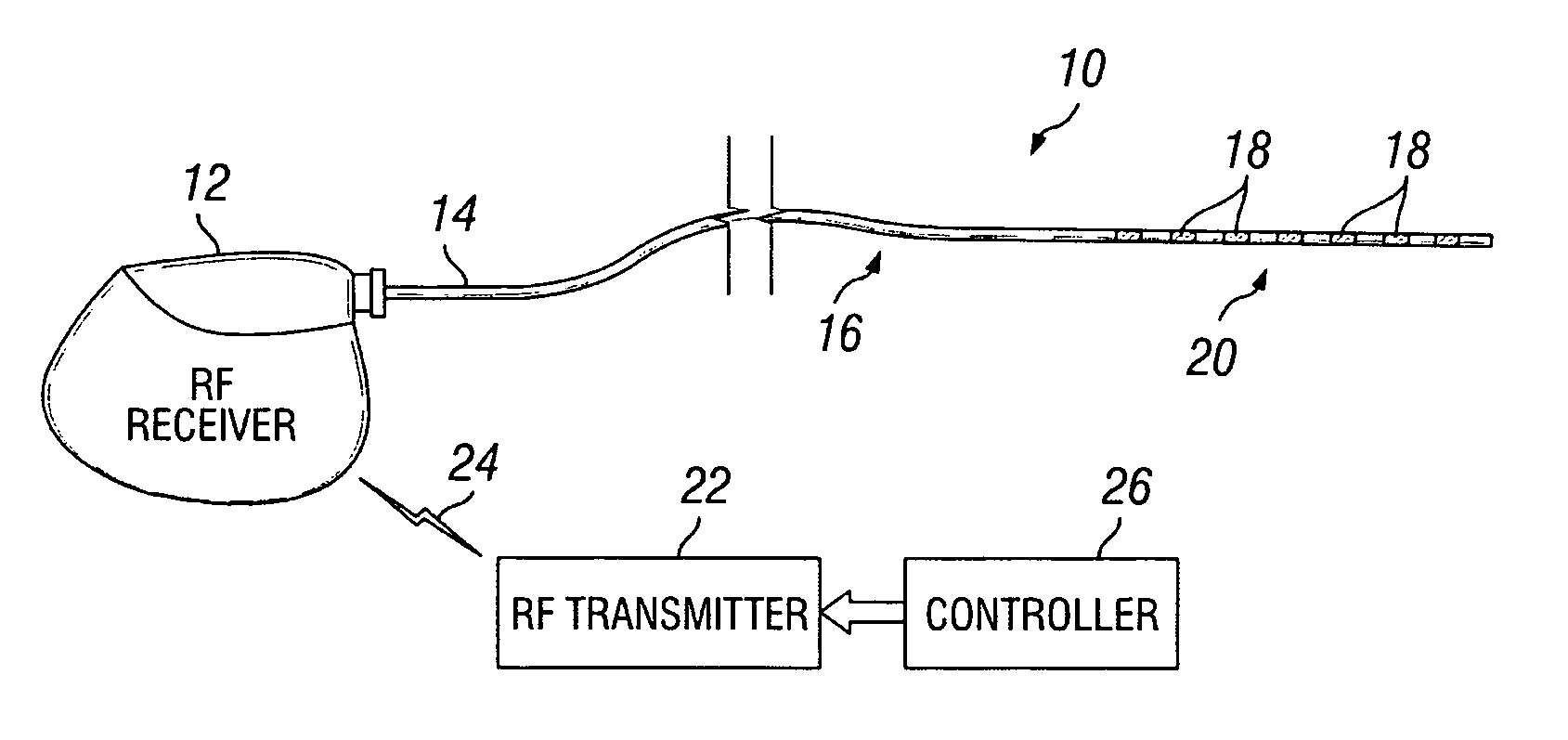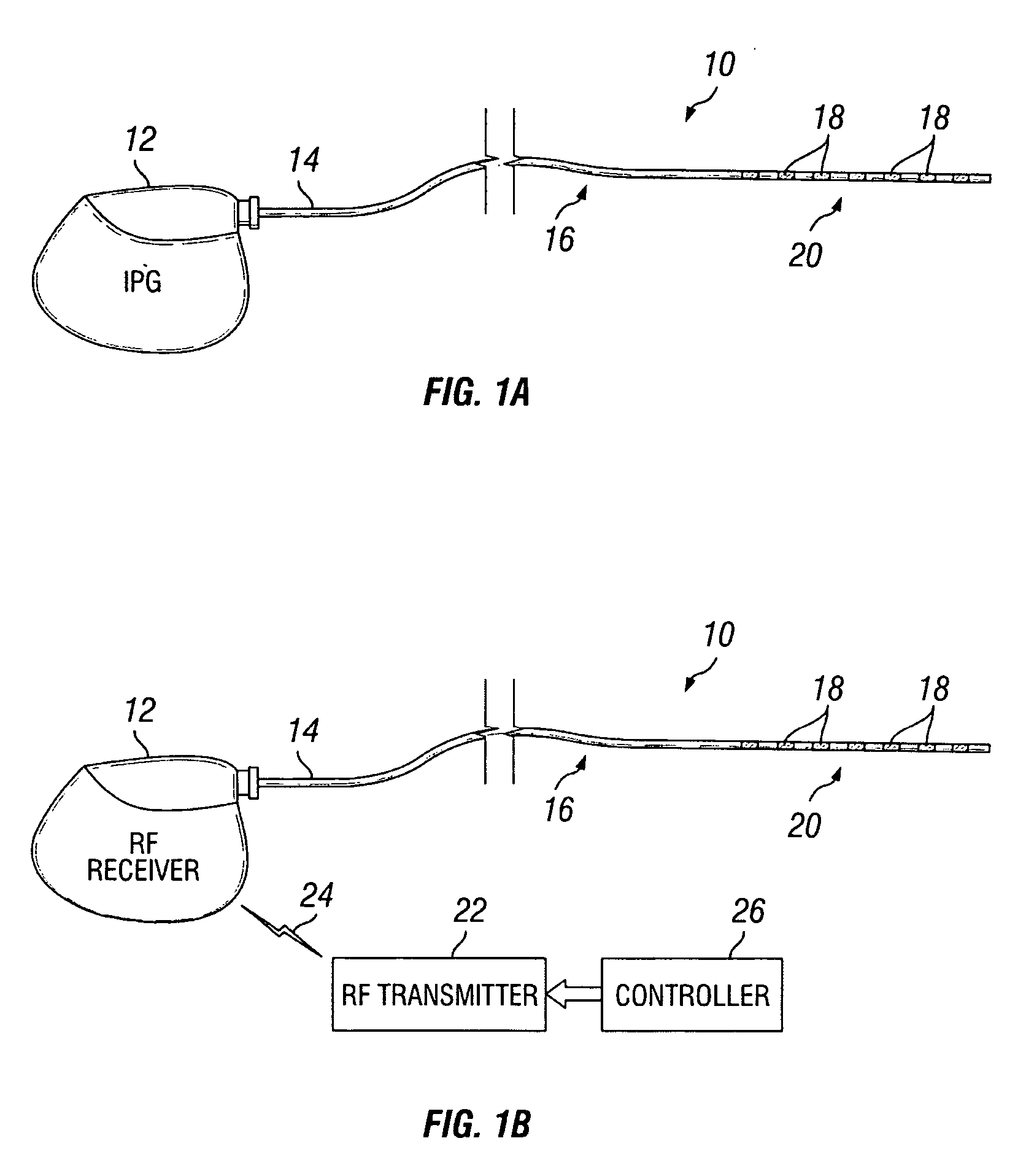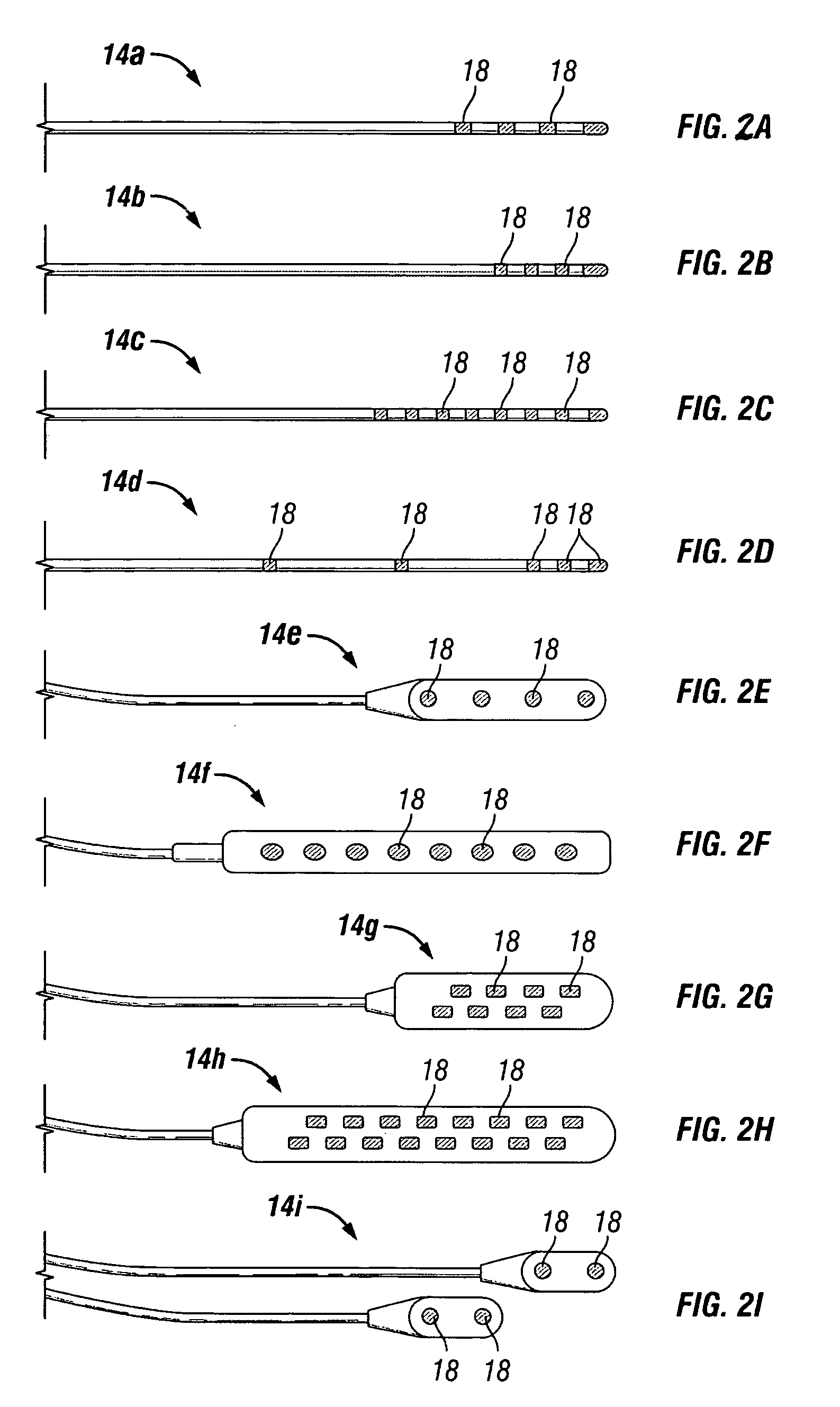Stimulation of the amygdalohippocampal complex to treat neurological conditions
a technology of amygdala hippocampal complex and brain stimulation, which is applied in the direction of head electrodes, internal electrodes, therapy, etc., can solve the problems of aggravated cases, tinnitus in some patients, and detectable noise to both the subject and an outside observer
- Summary
- Abstract
- Description
- Claims
- Application Information
AI Technical Summary
Benefits of technology
Problems solved by technology
Method used
Image
Examples
example
Treatment of Tinnitus
[0168] Five patients with unilateral tinnitus were treated with an amytal test of the anterior choroidal artery to determine if the AHC is involved in the patients' disorder. Standard procedures are used to perform an amytal test on the patients.
[0169] Briefly, 80 mg amobarbital was injected on one side of the body and the patient's tinnitus was evaluated. The AHC on the other hemisphere was treated after the effects of the amobarbital subside, usually after about 10 minutes.
[0170] Tinnitus was evaluated using TMS, TENS, the Goebel tinnitus questionnaire, audiometry, tinnitus matching, impedance, BAEP, and OAE. Patients that see 60 percent or more reduction in the tinnitus symptoms are then evaluated for introduction of an AHC electrode to be implanted in the position indicated in FIG. 3. In this study, 3 of 5 patients saw greater than 60% suppression of tinnitus during the contralateral amytal test. Results from the study are shown in the table in FIG. 5.
PUM
 Login to View More
Login to View More Abstract
Description
Claims
Application Information
 Login to View More
Login to View More - R&D
- Intellectual Property
- Life Sciences
- Materials
- Tech Scout
- Unparalleled Data Quality
- Higher Quality Content
- 60% Fewer Hallucinations
Browse by: Latest US Patents, China's latest patents, Technical Efficacy Thesaurus, Application Domain, Technology Topic, Popular Technical Reports.
© 2025 PatSnap. All rights reserved.Legal|Privacy policy|Modern Slavery Act Transparency Statement|Sitemap|About US| Contact US: help@patsnap.com



